Trident: Powerful Religious Symbol Found In Many Ancient Cultures
Angela Sutherland - AncientPages.com - According to Greek legends, Poseidon (equated with the Roman god Neptune) possessed a magical trident. When angry, the Greek god of the sea could cause storms, tsunamis, and earthquakes, submerge lands and islands and split rocks with his magical trident.
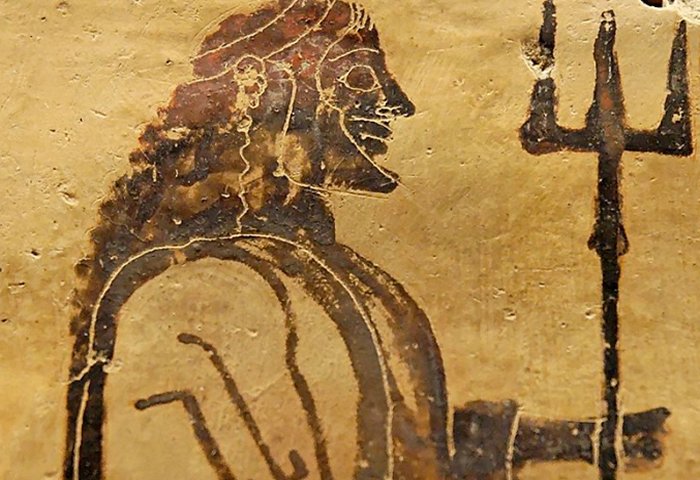 Poseidon with his trident, Corinthian plaque, 550–525 BC. From Penteskouphia. Public Domain
Poseidon with his trident, Corinthian plaque, 550–525 BC. From Penteskouphia. Public Domain
With this powerful three-pronged spear, he could finally bring back peacefulness again. Poseidon's divine trident was created by the Cyclops, the giants skillful in metallurgy.
"In the hands of Poseidon or Neptune, the trident has a practical use, since it emulates the shape of one of the earliest fishing implements. Poseidon uses it to control the seas, so it is a symbol of authority. Because of its association with water, the trident is the alchemical symbol for this element.
"Where a trident has three prongs of even length, it is a secret symbol of the Cross of Christianity. However, Satan is often seen harrying the souls in hell with a trident. It is likely that he is depicted with it in order to associate him with the pre-Christian Gods who also used it.
This versatile three-pronged tool is also a fire symbol—the prongs look like flames—and it is, therefore, a symbol of thunderbolts and lightning. As such, many of the sky Gods carry a trident, too. These include Thor or Wotan of Norse mythology..." 1
Kongo - Trident-Shaped Staff With Powers
In Japanese mythology, a Kongo (kongose) is another, spectacular, trident-shaped staff, which emits bright light in the darkness. The Kongo grants wisdom and insight, and today is not considered a weapon but rather a kind of ritual object called the Kongo vajra (meaning thunderbolt).
In Japanese legends, the Kongo vajra was a formidable weapon that belonged originally to the Japanese mountain god Koya-no-Myojin.
However, the Kongo remains among many other puzzling objects that have survived to our time.
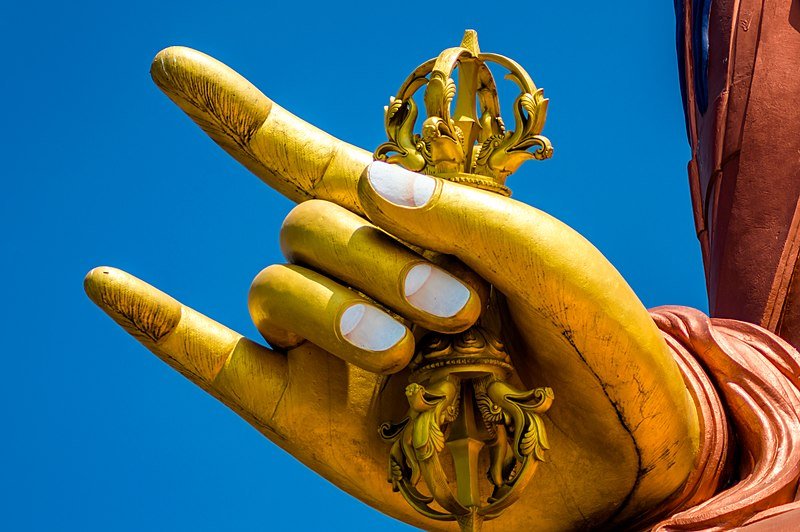 In Vajrayana Buddism, the traditional vajra is used in various rituals. source
In Vajrayana Buddism, the traditional vajra is used in various rituals. source
This weapon-like staff has usually sharp, dagger-like prongs, which number varies from one, three, five, and even more prongs on each end. It is said that the three prongs of the trident symbolize the past, present, and future, or possibly also Heaven, Earth, and Hell.
Some of them are beautifully decorated with Buddhist jewel designs.
Legend has it, this Kongo is the equivalent of the Sanskrit Vajra, which is called ‘dorje’ in Tibet, in China - 'jingang’ and in Mongolia – ochir.
Trishula (Trident) In Hands Of Vedic Gods
The trident of Poseidon had powers closely related to the sea and is deeply rooted in the beliefs of the people living near the sea or other large bodies of water. The Kongo Vajra, on the other hand, was believed to be particularly dangerous in the clouds as used by the gods linked with storms, lightning, and thunderstorms.
One such god is the ancient Vedic deity Apam Napata (“son of waters”) who dwells surrounded by waters, which give him gaining strength in them, is connected with rivers. And, at the same time, the name Apam Napata is an epithet of the fire god Agni who rides a ram and is holding the trident and is sometimes identified with him. Apam Napata is the Universal Self, the fire of glory (or the son of the ocean).
'Trishula' (Sanskrit for "triple-spear") is a mysterious symbol of great importance in India.
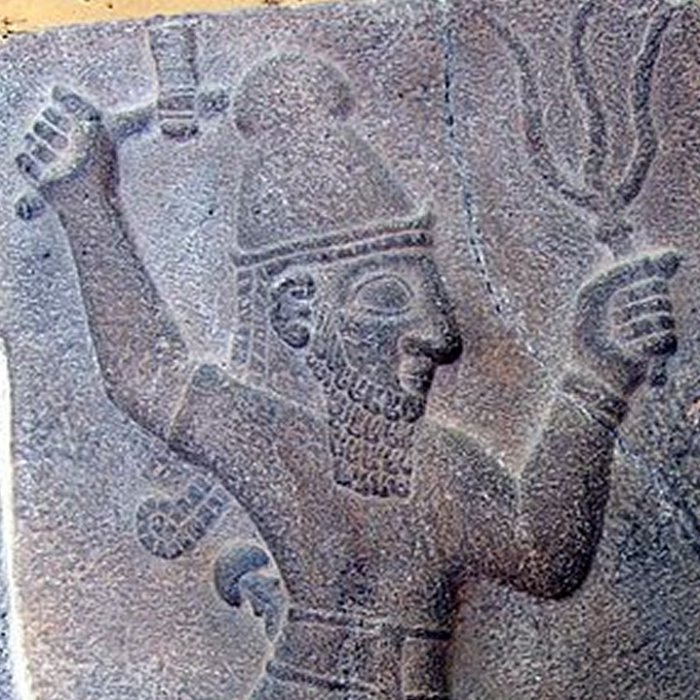 The Hittite weather-god Teshub, wielding a thunderbolt and an ax. A bas-relief at Ivriz. Image credit: Maur - Public Domain
The Hittite weather-god Teshub, wielding a thunderbolt and an ax. A bas-relief at Ivriz. Image credit: Maur - Public Domain
In Hindu mythology, 'trishula' was the weapon of Shiva, the destroyer, the most powerful god of the Hindu pantheon, and one of the members in the Hindu Trinity. The trident in his hand possessed three prongs, which reflected Shiva’s function as creator, destroyer, and preserver. It also symbolized Shiva's monogram or was the representation of the Law (Dharma). Vishnu worshippers believed that the trident is their god's footprint.
Worshippers of Shiva paint the sign of the trident on their foreheads as a visible symbol.
The Sanskrit Vajra was the indestructible lightning-diamond pounder of Indra, a Vedic deity in Hinduism, the chief god of the heavens and of the East.
Genghis Khan And Tamga
Another holder of the trident was the great Genghis Khan, Mongolia’s great warlord. The trident was his personal tribal sign (tamga) and this sign was crowned with the sacred banner-Sulede (sulde) - the Genghis Khan standard (trident over nine hanging bunches of yak tail hair).
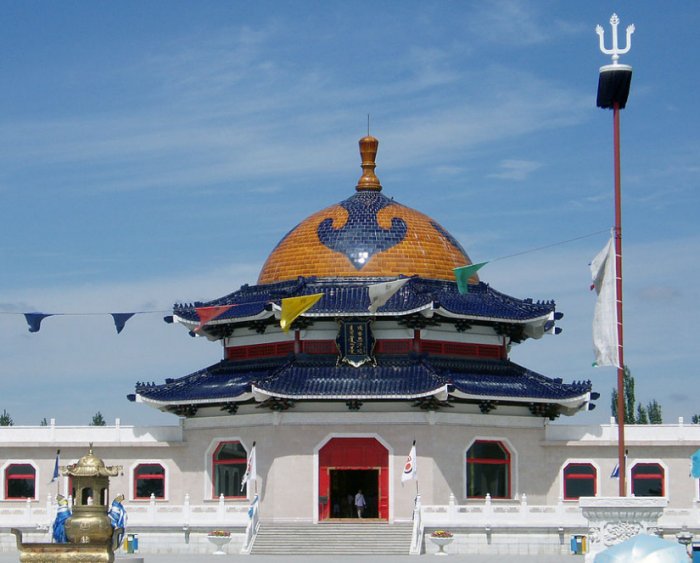 Mausoleum of Genghis Khan in Ordos, Inner Mongolia, China. Image credit: Fanghong - CC BY-SA 3.0
Mausoleum of Genghis Khan in Ordos, Inner Mongolia, China. Image credit: Fanghong - CC BY-SA 3.0
The trident sign that decorates the stele installed at Genghis Khan’ s birthplace, was believed to have brought fortune and triumph to Genghis Khan's cavalry some 800 years ago.
One legend has it that Genghis asked for power and help from God and suddenly a dazzling light flickered in the sky and the trident-like weapon floated over the heads of his army.
Written by – A. Sutherland - AncientPages.com Senior Staff Writer
Copyright © AncientPages.com All rights reserved. This material may not be published, broadcast, rewritten or redistributed in whole or part without the express written permission of AncientPages.com
Expand for referencesReferences:
- Nozedar, A. The Element Encyclopedia of Secret Signs and Symbols
Marshall R. Noah's Ark and the Genesis 10 Patriarchs
Gannon A. The Iconography of Early Anglo-Saxon Coinage: Sixth to Eighth Centuries
More From Ancient Pages
-
 Viking Grave And Sword Discovered In Norwegian Garden
Archaeology | Jul 3, 2023
Viking Grave And Sword Discovered In Norwegian Garden
Archaeology | Jul 3, 2023 -
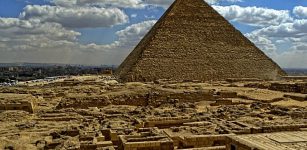 Secrets Of Cheops’ Pyramid: Does The Newly Found Chamber Contain An Iron Throne?
Archaeology | Jan 13, 2018
Secrets Of Cheops’ Pyramid: Does The Newly Found Chamber Contain An Iron Throne?
Archaeology | Jan 13, 2018 -
 Makhunik – 5,000-Year-Old City Of Dwarfs Who Hoped To Return One Day
Civilizations | May 28, 2014
Makhunik – 5,000-Year-Old City Of Dwarfs Who Hoped To Return One Day
Civilizations | May 28, 2014 -
 LIDAR Discovers Two Remarkably Large Sites In The Amazon And Evidence Of Early Urbanism
Archaeology | May 25, 2022
LIDAR Discovers Two Remarkably Large Sites In The Amazon And Evidence Of Early Urbanism
Archaeology | May 25, 2022 -
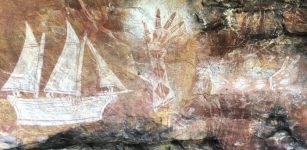 Map Of Hidden NT Landscape Where First Australians Lived More Than 60,000 Years Ago
Archaeology | May 5, 2023
Map Of Hidden NT Landscape Where First Australians Lived More Than 60,000 Years Ago
Archaeology | May 5, 2023 -
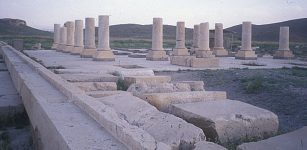 Pasargadae: Capital Of Achaemenid Empire Destroyed By Alexander The Great
Civilizations | Oct 24, 2016
Pasargadae: Capital Of Achaemenid Empire Destroyed By Alexander The Great
Civilizations | Oct 24, 2016 -
 Legend Of Jin Chan: The ‘Golden Toad’ – Money Frog That Brings Luck And Is A Feng Shui Charm
Chinese Mythology | May 5, 2016
Legend Of Jin Chan: The ‘Golden Toad’ – Money Frog That Brings Luck And Is A Feng Shui Charm
Chinese Mythology | May 5, 2016 -
 On This Day In History: Black Death Arrived In Britain – On June 24, 1348
News | Jun 24, 2016
On This Day In History: Black Death Arrived In Britain – On June 24, 1348
News | Jun 24, 2016 -
 Thousands Of Ancient Tools From A South African Cave Reveal Prehistoric Human Connections
Archaeology | Apr 11, 2025
Thousands Of Ancient Tools From A South African Cave Reveal Prehistoric Human Connections
Archaeology | Apr 11, 2025 -
 New Study Challenges The Beginning Of Civilization
Archaeology | Apr 11, 2022
New Study Challenges The Beginning Of Civilization
Archaeology | Apr 11, 2022 -
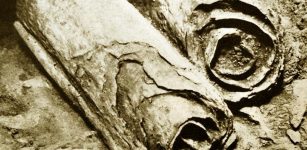 U.S. Bible Museum Says Five Dead Sea Scrolls Fragments In Their Collection Are Fake
Archaeology | Oct 25, 2018
U.S. Bible Museum Says Five Dead Sea Scrolls Fragments In Their Collection Are Fake
Archaeology | Oct 25, 2018 -
 Man Finds A Viking Sword In His Garden – A Viking Grave Could Also Be Nearby – Scientists Say
Archaeology | Sep 2, 2022
Man Finds A Viking Sword In His Garden – A Viking Grave Could Also Be Nearby – Scientists Say
Archaeology | Sep 2, 2022 -
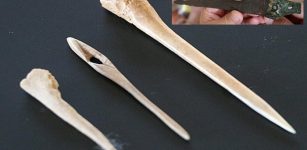 8,600-Year-Old Bone Needles Found In Denizli Closely Associated With Old Textile Tradition
Artifacts | Sep 2, 2020
8,600-Year-Old Bone Needles Found In Denizli Closely Associated With Old Textile Tradition
Artifacts | Sep 2, 2020 -
 On This Day In History: Copernicus’ s Book Banned By Catholic Church – On Mar 5, 1616
News | Mar 5, 2017
On This Day In History: Copernicus’ s Book Banned By Catholic Church – On Mar 5, 1616
News | Mar 5, 2017 -
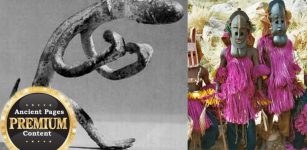 Did The Dogon Tribe Have Knowledge Of Theoretical Physics 5,000 Years Ago?
Ancient Mysteries | Aug 2, 2017
Did The Dogon Tribe Have Knowledge Of Theoretical Physics 5,000 Years Ago?
Ancient Mysteries | Aug 2, 2017 -
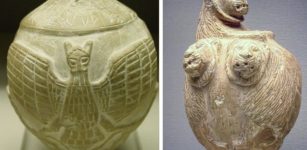 ‘Stone Club Head Of Mesilim’ Probably The Most Powerful Sumerian Ruler At That Time
Artifacts | Oct 12, 2017
‘Stone Club Head Of Mesilim’ Probably The Most Powerful Sumerian Ruler At That Time
Artifacts | Oct 12, 2017 -
 Mystery Of The 2,000-Year-Old ‘Urn Burial’ Ceremonies: 113 Tombs Discovered Near the Ancient City Of Fudi
Archaeology | Oct 11, 2016
Mystery Of The 2,000-Year-Old ‘Urn Burial’ Ceremonies: 113 Tombs Discovered Near the Ancient City Of Fudi
Archaeology | Oct 11, 2016 -
 Researchers Reconstruct Genome Of Centuries-Old E. Coli Using Fragments Extracted From An Italian Mummy
News | Jun 18, 2022
Researchers Reconstruct Genome Of Centuries-Old E. Coli Using Fragments Extracted From An Italian Mummy
News | Jun 18, 2022 -
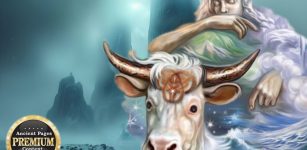 Ginnungagap From Which The World, Gods, Humanity And All Life Emerged In Norse Beliefs
Myths & Legends | Dec 11, 2024
Ginnungagap From Which The World, Gods, Humanity And All Life Emerged In Norse Beliefs
Myths & Legends | Dec 11, 2024 -
 Origin Of The Genetic Code – Study
DNA | Dec 16, 2024
Origin Of The Genetic Code – Study
DNA | Dec 16, 2024
